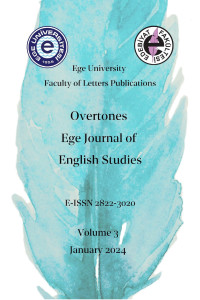Abstract
Maggie O’Farrell’s 2022 novel The Marriage Portrait offers readers an alternative perspective on Renaissance Italy, drawing inspiration from art history with a focus on Lucrezia di Cosimo de’ Medici, who became known as the Duchess of Ferrara through her marriage to Alfonso II d’Este, Duke of Ferrara in 1560. A brief historical context of Lucrezia and Alfonso’s matrimony and her mysterious death is introduced in the “Historical Note” at the beginning of the book. It is followed by two literary epigraphs; one from Robert Browning’s poem “My Last Duchess” and the second from Giovanni Boccaccio’s The Decameron. Whilst the short extract from Decameron addresses to the women’s life in the Florence court in general, Browning’s “My Last Duchess” deserves particular attention since as O’Farrell remarks in the “Author’s Note”, “Alfonso II d’Este, Duke of Ferrara, is widely considered to have been the inspiration for Robert Browning’s poem ‘My Last Duchess’; Lucrezia di Cosimo de Medici d’Este, Duchess of Ferrara, is the inspiration for this novel.”(The Marriage Portrait, 433). Unlike Robert Browning, who objectifies Lucrezia’s portrayed figure through the eyes of Alfonso d’Este; O’Farrell’s narrative portrays Lucrezia as an active and vibrant character, liberating her from the confines of the painting, taking opposition to the classical approach of art history which typically reduces female figures to passive objects in the art works. As the story flows, it reveals the process of personal growth in the Renaissance context, which also turns into a battle for survival, which will be focused in this book review.
Keywords
Details
| Primary Language | English |
|---|---|
| Subjects | British and Irish Language, Literature and Culture |
| Journal Section | Book Reviews |
| Authors | |
| Publication Date | January 22, 2024 |
| Submission Date | September 19, 2023 |
| Published in Issue | Year 2024 Issue: 3 |


